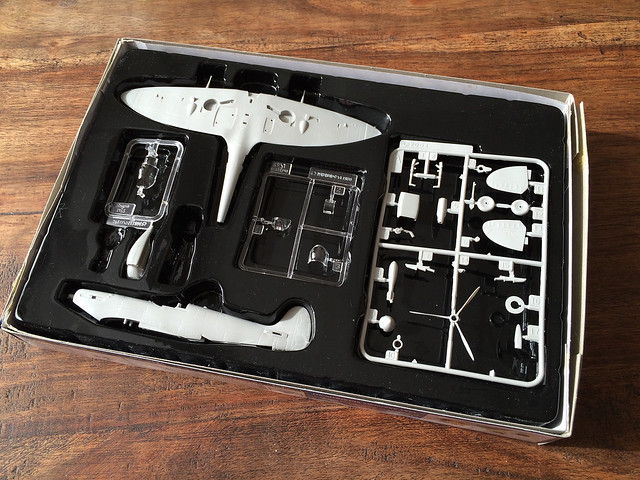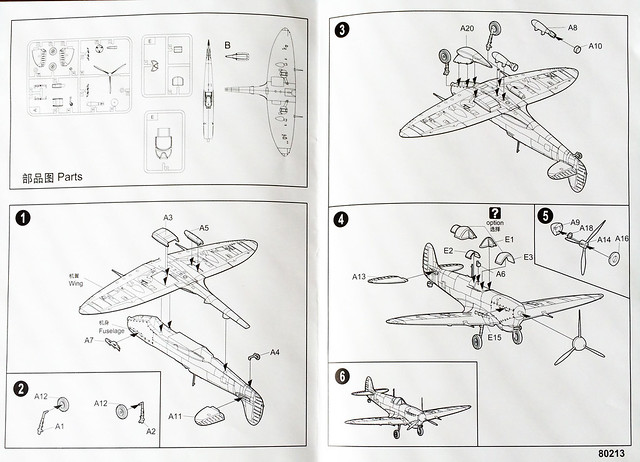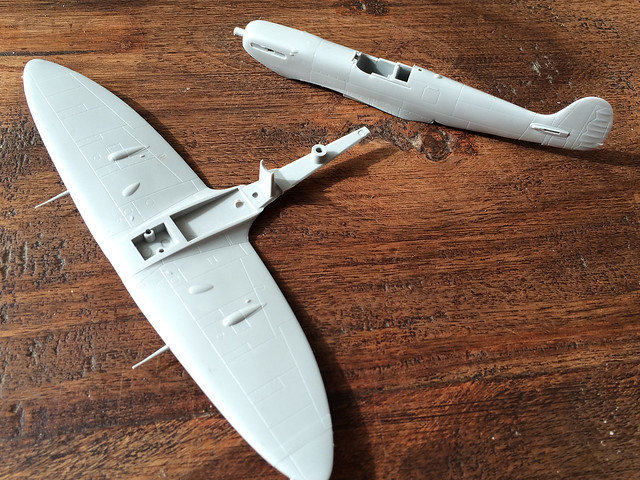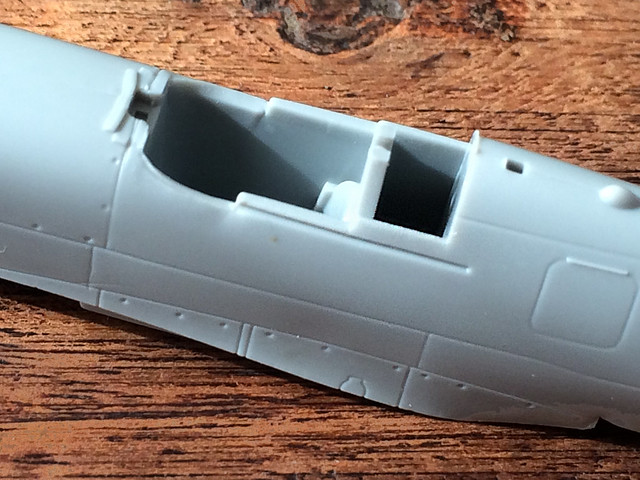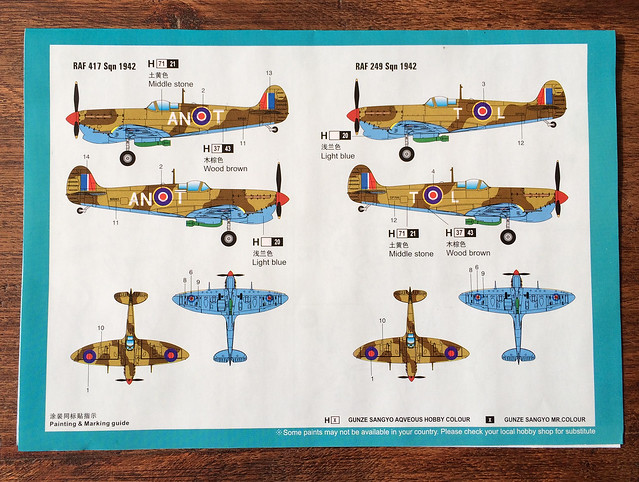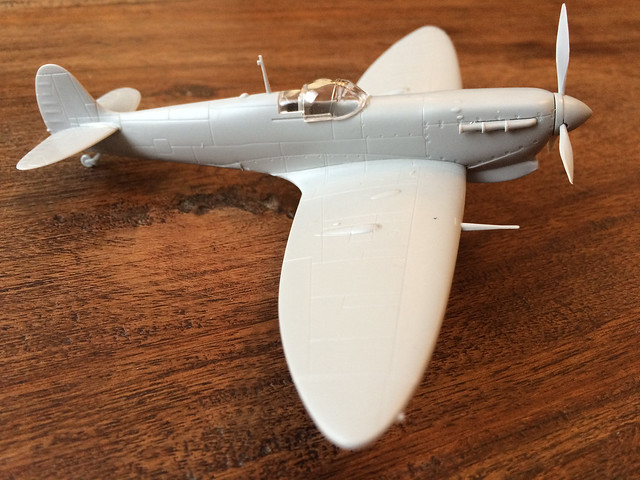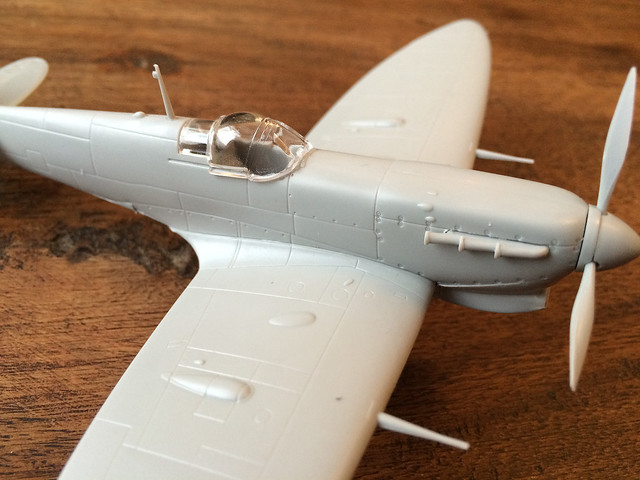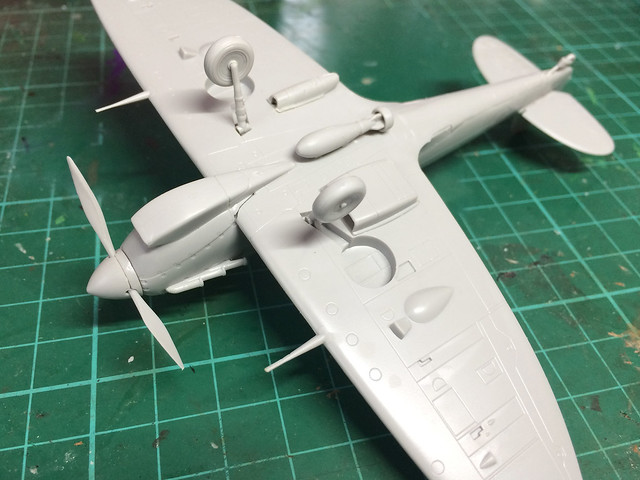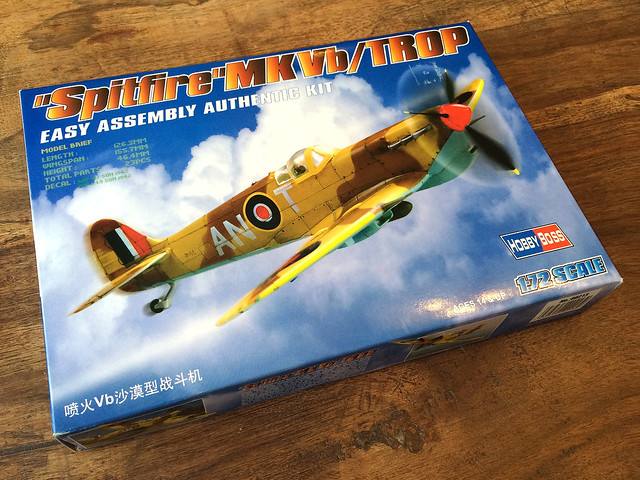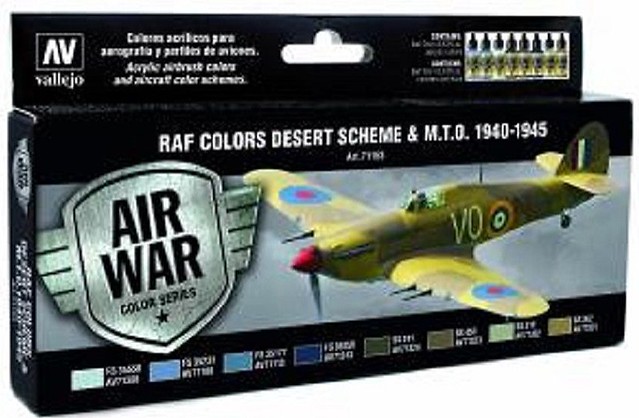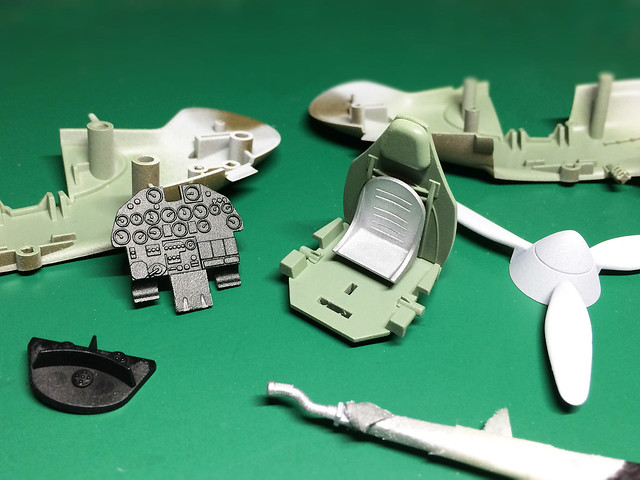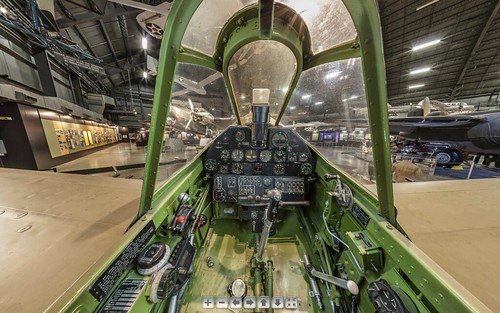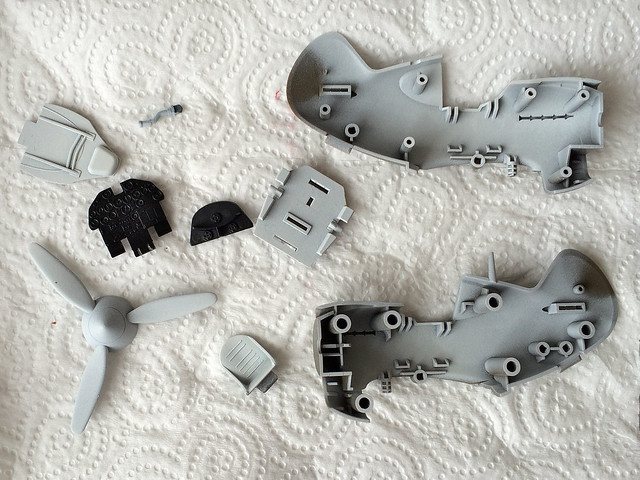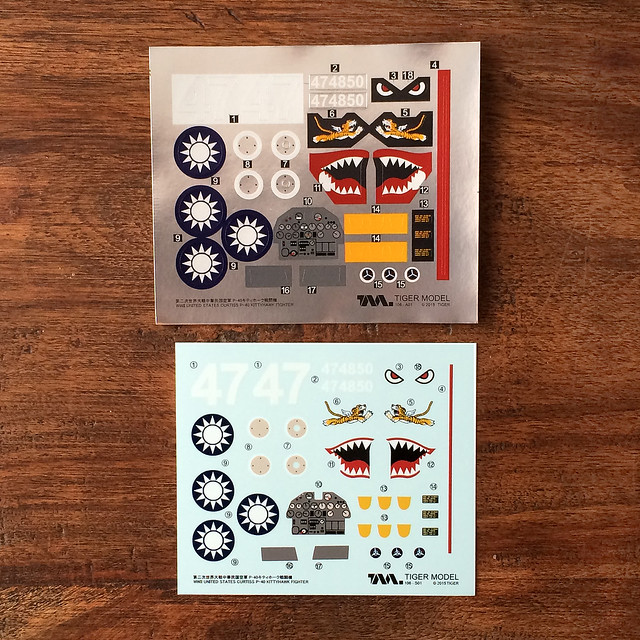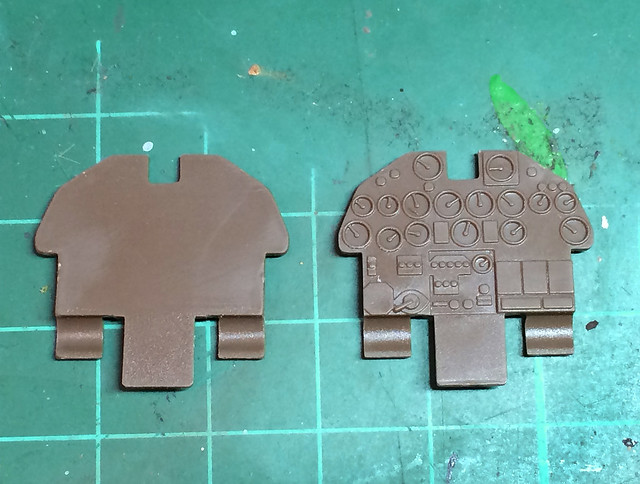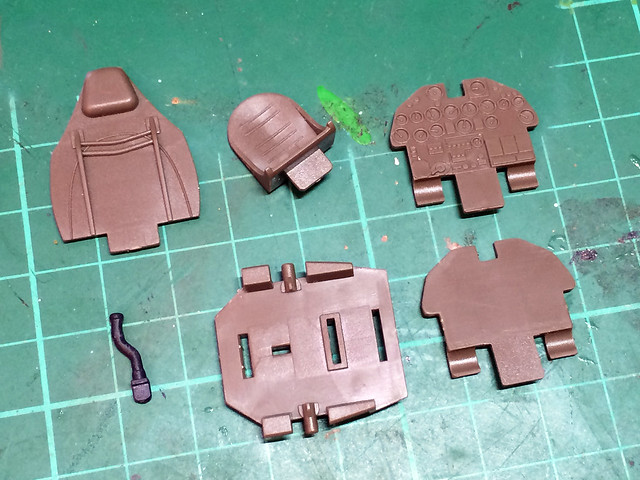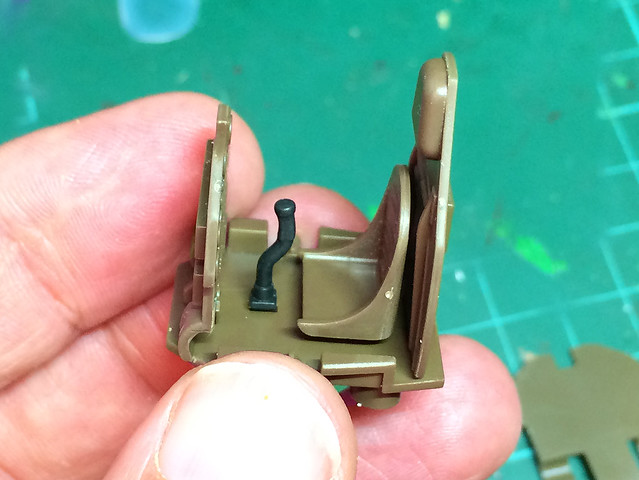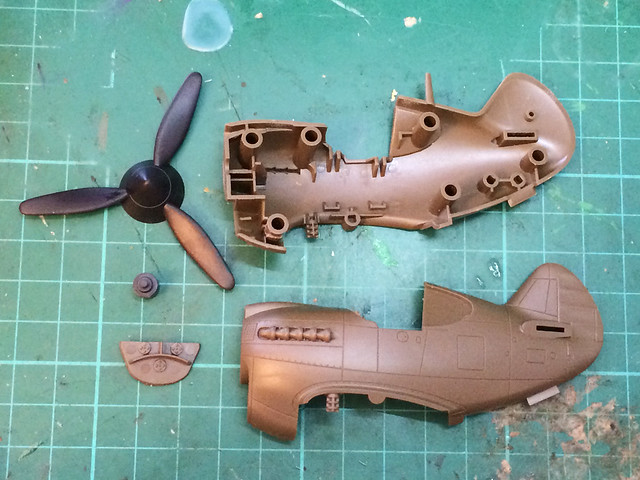However, I think the design of the major components are innovative enough to be worth looking at.
Bish, bash, bosh...Done!
If, by chance, you lost the Hobby Boss instructions you'd have no reason to panic whatsoever. There are so few parts and so obvious are their place in the model that you could imagine that if you closed the box and shook it for long enough you would end up with a fully built Spitfire!
In particular, the solid one-piece fuselage and wing units (which snap together) mean you have the majority of the work done in just a few seconds! The small smattering of additional parts hardly make the project build more than five minutes.
However, obviously, there is a price to be paid for this simplicity...
That most glaring 'problem' this dumbed-down kit presents the modeller with is that - due to the solid one-piece fuselage - there is no real cockpit to speak of! Just a rudimentary 'slot' or hole over which you can glue the canopy.
Beginners may not feel this is a problem at all, of course.
The next issue is the solid wing unit. No separate flaps here - and younger (and even some older) modellers will have to watch out for those integral 20mm guns, which are very flimsy - but I will say that Hobby Boss have made a fairly nice job of all the panel lines, I've seen deeper line detail cut into Airfix models.
Finally, I must mention the canopy. It is awful - not so much in quality of transparent plastic but in the sculpting. The box artwork gives you a fair impression of how bulky it is and it spoils the lovely clean lines of the Spitfire in my opinion. However, HB gives you two canopy options - a one-piece (which I have just described) and a three-piece, should you wish to model the canopy open. The three-piece looks slightly better, and I would suggest using this even if you want to model the canopy closed (I'll try that out to make sure it works).
And that, is that. But here's some additional reference photos...
Not very imaginative with the aircraft scheme options, it would have either have been nice to see a European theatre Vb or a US Army Airforce version, perhaps?
~ Well, it sorta looks like a Spitfire , doesn't it?
But, you'll notice the bulbous canopy...
Incidentally, the centerline 250lb bomb confused me a bit - I hadn't realised that the Vb's were equipped with bombs, but in fact they were and the Malta based Vbs were field modified to carry two, one under each wing! So, there you go.
The underside has some nice panel lines BUT also highlights that this model is intended to be made with the undercarriage DOWN and only down. No provision or option is made for the model to be built in flying mode!
And here's a shot of the nasty seam join at the end of the wing root. In fact, overall, you would have to do a bit of filling to hide some of the unsightly joins...(I have not bothered to fill the seams and gaps as this is just a painting exercise.)
And I will end by giving you one more look at that horrible canopy - in this close-up, you can see how the front canopy sections sit outside the cockpit edges and are not streamlined to blend into the fuselage profile as is the case in reality...
